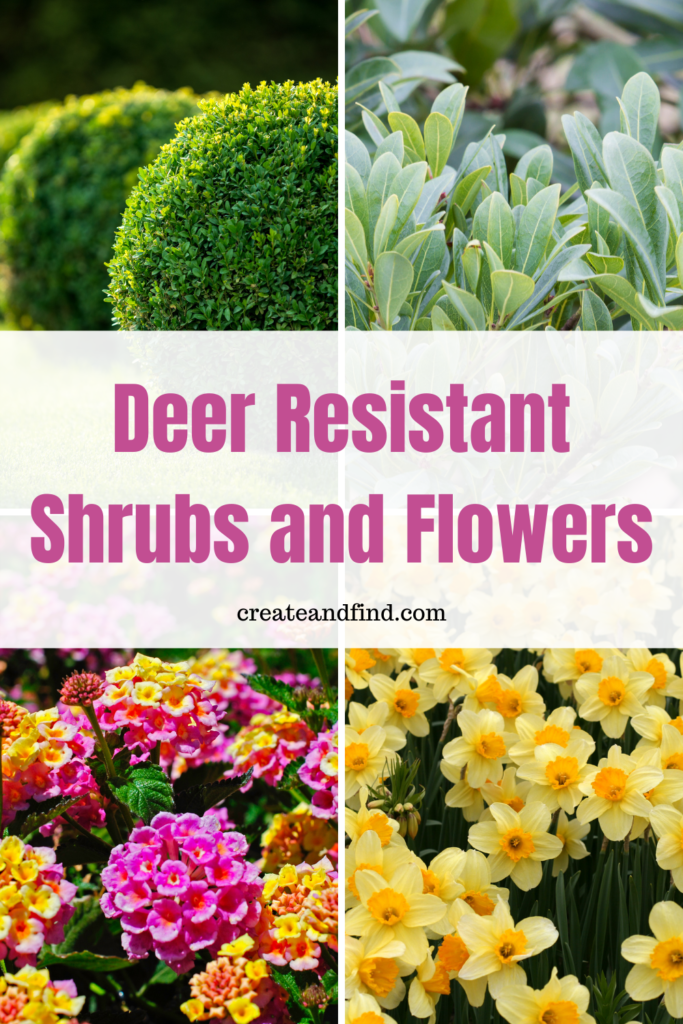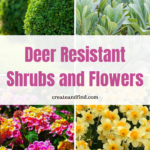Technically nothing is completely deer resistant as far as plants go. It all depends on what other food sources are around for them to snack on. But there are some deer resistant shrubs and flowers you can plant to give your landscaping a chance against the deer.
Whether you live in a neighborhood or a wooded area, chances are you might have some hungry deer roaming around. And deer love to snack on your plants. Increase your landscape’s survival by choosing a few deer resistant shrubs and flowers. Options include Black-eyed Susans, Boxwood, Coleus, Fothergilla, and Hibiscus to name a few.
Deer Resistant Shrubs and Flowers
Black-eyed Susans
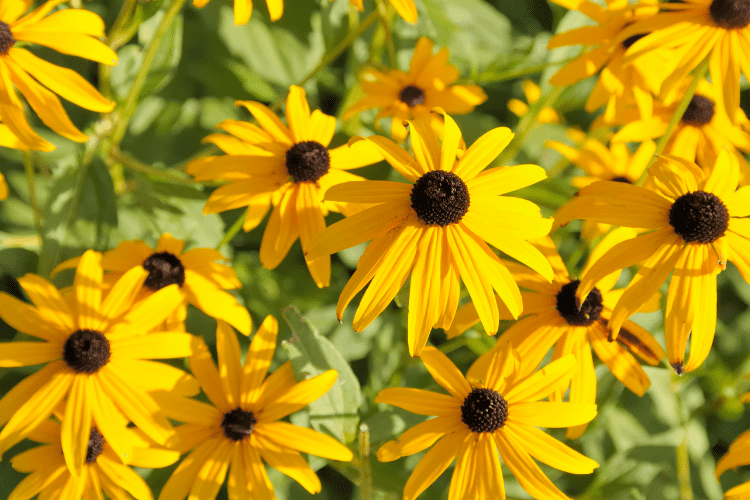
Black-eyed Susans are available in perennial or annual varieties. The perennial types re-seed themselves with underground stems which can add even more plants to your landscape.
Deer don’t love to snack on these due to their hairy stems and leaves. They produce gorgeous yellow blooms that can reach up to 3 inches in diameter. The plants can grow up to 3 feet tall as well.
- Black-eyed Susans are ideal for Zones 3-9
- They prefer full sun (at least 6 hours of full sun a day)
- Drought resistant once established
- They are pollinators so butterflies and bees love them
- Plant in early spring or fall
- Blooms arrive in June and can last until October
- Deadhead the blooms to produce even more flowers
Coleus
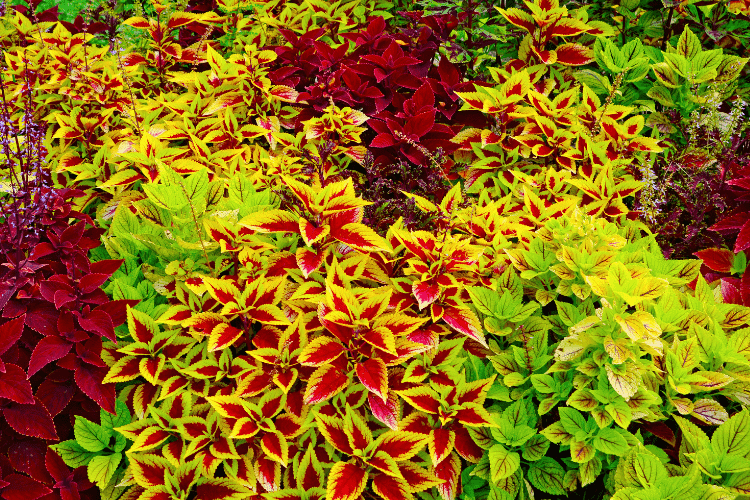
Coleus is one of my absolute favorite plants. These are show stoppers that come in a variety of colors and can be used in the ground or in planters.
They are available in a variety of colors and patterns from dark green, purple, burgundy, chartreuse, mixed green with pink, etc. They look amazing alone or alongside other plants.
- Coleus are perennials that thrive in Zones 10-11. But. You can grow these as annuals in other Zones. They won’t typically survive a cold climate through the winter.
- They grow best with some shade so they don’t get scorched by the hot afternoon rays of the sun.
- Give them room to grow – plant them at least 12-18 inches apart in the ground. However, they will stay contained in a pot.
- Cut off the wispy flower heads as they grow or you’ll end up with leggy looking stalks out of your plant.
- Deer tend to avoid them due to the texture of the foliage.
- Can be toxic to pets so be aware of the location where you plant Coleus.
- Some plants can grow up to 3 feet wide so they make an excellent choice if you have a lot of space to fill.
Boxwood
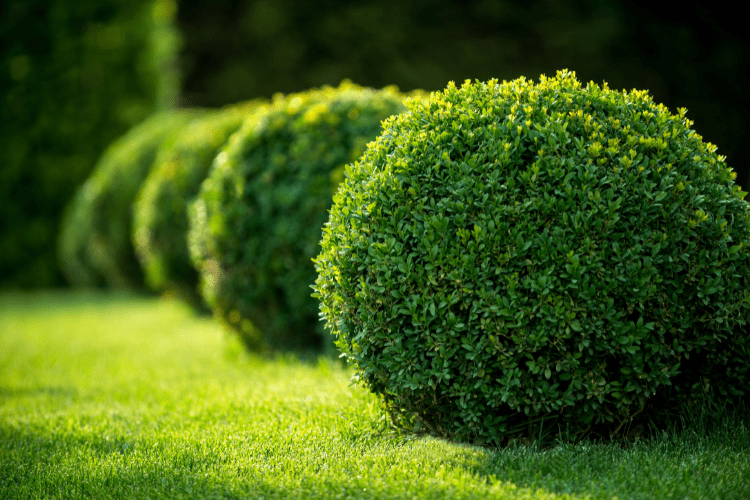
Boxwoods are excellent choices for deer resistant shrubs. They are particularly good if you’re looking for low-maintenance shrubs or shrubs for small spaces.
These compact evergreen shrubs can be shaped into neat-looking shrubs and they won’t overtake your yard anytime soon. They only grow about 1/2 to 6 inches per year.
- Boxwoods are good for Zones 4-9.
- They love partial shade, but you can also grow them in full sun.
- These evergreen shrubs have waxy dark green foliage year round.
- Boxwoods have shallow root systems so they can be planted near homes or sidewalks.
Hibiscus
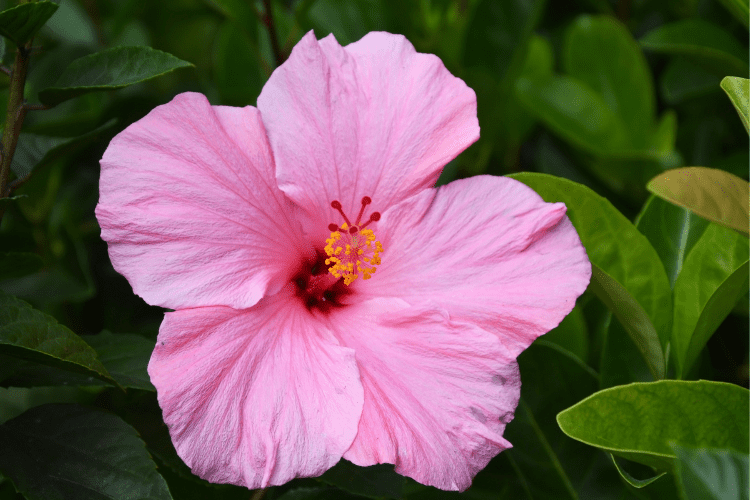
Again – no plant is completely safe from deer including Hibiscus. If the deer are hungry enough, they will munch on your Hibiscus leaves and stems and possibly the flowers.
But, there are certain varieties of this stunning flower that the deer tend to resist. Check out this article for ideas on which Hardy Hibiscus variety to plant.
In my opinion, these plants are stunning enough to give them a try. They produce the most beautiful, huge flowers.
- Some Hibiscus are perennials that thrive in Zones 5-9, while other tropical varieties need Zones 10-11.
- Can be grown in planters
- They prefer full sun and if the temperatures are dropping below 50 degrees F, bring the plant inside a warmer area. (I live in Zone 8A and we stored our Hibiscus in the garage all winter)
- Hibiscus plants can produce flowers in shades of pink, red, yellow, orange, and purple and have large ruffled blooms.
Daffodils
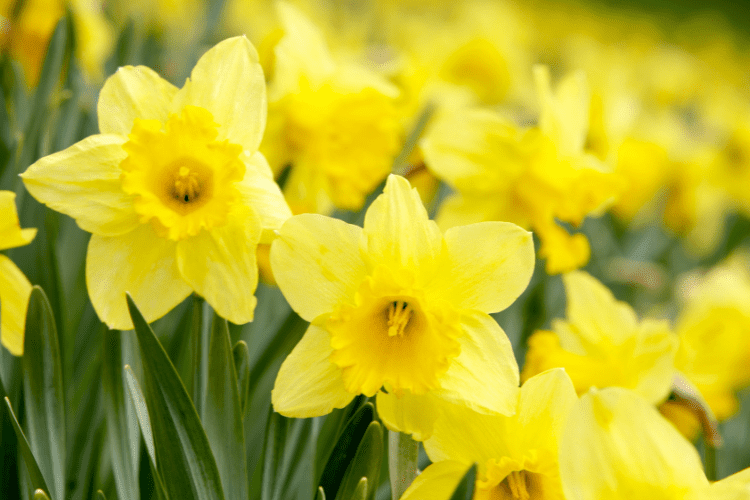
Daffodils are one of the most deer resistant flowers you can plant. These flowers contain a substance called Lycorine which is not appealing to deer at all. There are no plants guaranteed against deer, but Daffodils are one of your best bets.
Not only are they deer resistant, but you can plant hundreds of Daffodil bulbs in the fall before the ground freezes and you’ll have an amazing show of flowers in the early spring.
- Daffodils are ideal for cooler climates and good for Zones 3-8
- Most varieites are perennial and will return year after year with even more plants
- Plant your bulbs at least 3 weeks before the ground freezes
- Excellent choice for full sun but can tolerate partial shade
- Plant the bulbs about 6″ deep and space them around 4-5″ apart.
- Plant the bulbs with the pointy ends facing up
Juniper
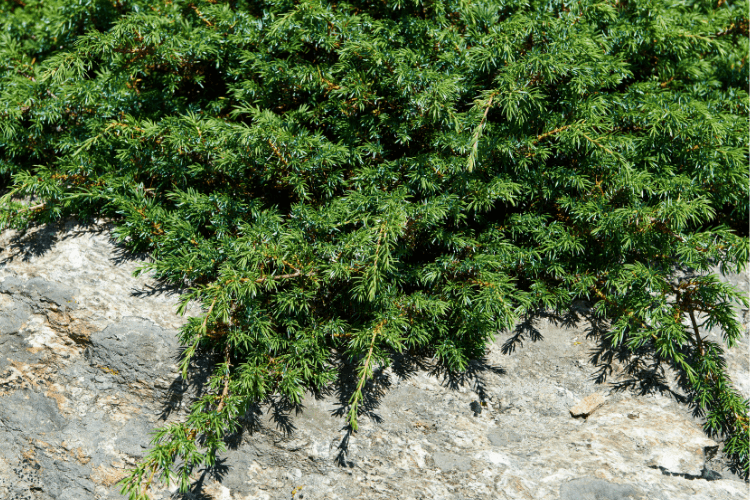
Juniper is available in many varieties including shrubs and trees. These evergreen plants are not a favorite of deer due to the strong fragrance they have.
You can find Juniper plants that will grow as a low ground cover or an upright tree – it all depends on what your landscaping wishes are.
- Zones 3-9 are best for Junipers
- These are evergreen shrubs and trees
- Shrubs are ideal as a cover for hillsides or sloped areas in the yard
- Full sun and well drained soil is best for their ideal growth
- There are species that grow 6″ tall and some that grow 20 feet tall. They will spread out several feet as well.
- Blue Rug Juniper and Creeping Juniper are two that are ideal for ground cover
Bayberry Shrubs
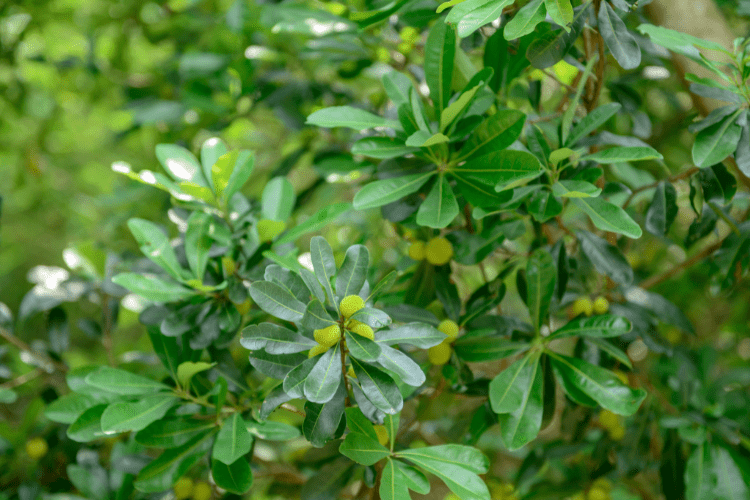
Bayberry shrubs are another one that deer don’t prefer due to the strong fragrance. The female plants produce berries that can be used along with the foliage for their wax to make candles.
- There are species of Bayberry for Zones 2-9. Opt for a Northern Bayberry if in Zone 2
- They are known as semi-evergreen depending on the climate of your winter months.
- The dense foliage provides cover for birds
- Bayberry tolerates many soil conditions as long as it’s well drained
- Full sun is the best option for planting Bayberry
- Some species will grow 6-10 feet tall and wide although they are slow growing
Lantana
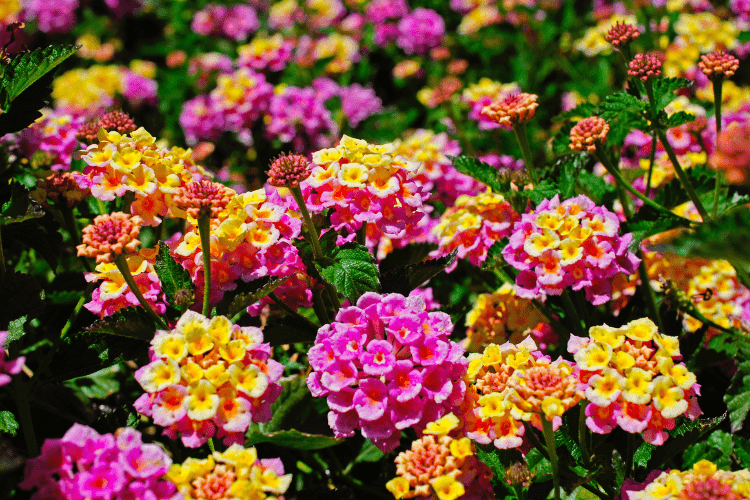
Lantana is a show stopper of a plant. These spreading plants have continuous flower clusters throughout their bloom time.
And bonus, they are easy to grow and widely available at garden centers. It’s one of the most stunning drought tolerant plants.
- Grown as perennials in Zones 8-11 and annuals in Zones 3-7
- Available in shades of red, pink, yellow, purple, bicolor, and more
- Drought and disease tolerant in addition to being deer resistant
- Lantana can spread out up to 10 feet wide
- These plants can tolerate full sun or partial shade
Fothergilla
Fothergilla is a blooming shrub that has white flowers but is best known for its dramatic fall foliage. If you’re looking for a plant that shows out in the fall, this is it.
Fothergilla is a deciduous shrub so it’ll lose its foliage in the winter.
- Fothergilla is suited for Zones 4-9
- Deciduous perennial – loses its leaves but returns year after year
- Can grow between 6-10 feet tall, but is slow growing
- Deer resistant
- Prefers full sun to light shade
I hope you’ve found some deer resistant shrubs and flowers that will suit your landscape needs. Remember, nothing is completely deer-proof, but these options will give you a fighting chance against hungry deer.
Nature Hills Nursery is a great place to start if you’re looking for deer-resistant shrubs and plants.

